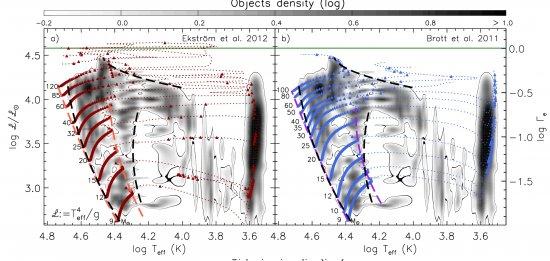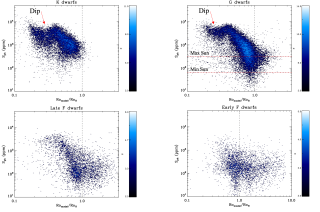The distribution of stars in the Hertzsprung-Russell diagram narrates their evolutionary history and directly assesses their properties. Placing stars in this diagram however requires the knowledge of their distances and interstellar extinctions, which are often poorly known for Galactic stars. The spectroscopic Hertzsprung-Russell diagram (sHRD) tells similar evolutionary tales, but is independent of distance and extinction measurements. Based on spectroscopically derived effective temperatures and gravities of almost 600 stars, we derive for the first time the observational distribution of Galactic massive stars in the sHRD. While biases and statistical limitations in the data prevent detailed quantitative conclusions at this time, we see several clear qualitative trends. By comparing the observational sHRD with different state-of-the-art stellar evolutionary predictions, we conclude that convective core overshooting may be mass-dependent and, at high mass ($\geq 15\,M_\odot$), stronger than previously thought. Furthermore, we find evidence for an empirical upper limit in the sHRD for stars with $T_{\rm{eff}}$ between 10000 and 32000 K and, a strikingly large number of objects below this line. This over-density may be due to inflation expanding envelopes in massive main-sequence stars near the Eddington limit.
Figure caption: Grey scale representation of the probability density distribution of the location of 575 Galactic stars in the spectroscopic Hertzsprung-Russell diagram. Three empirical borderlines between densely populated regions and empty regions are d
Advertised on
References


